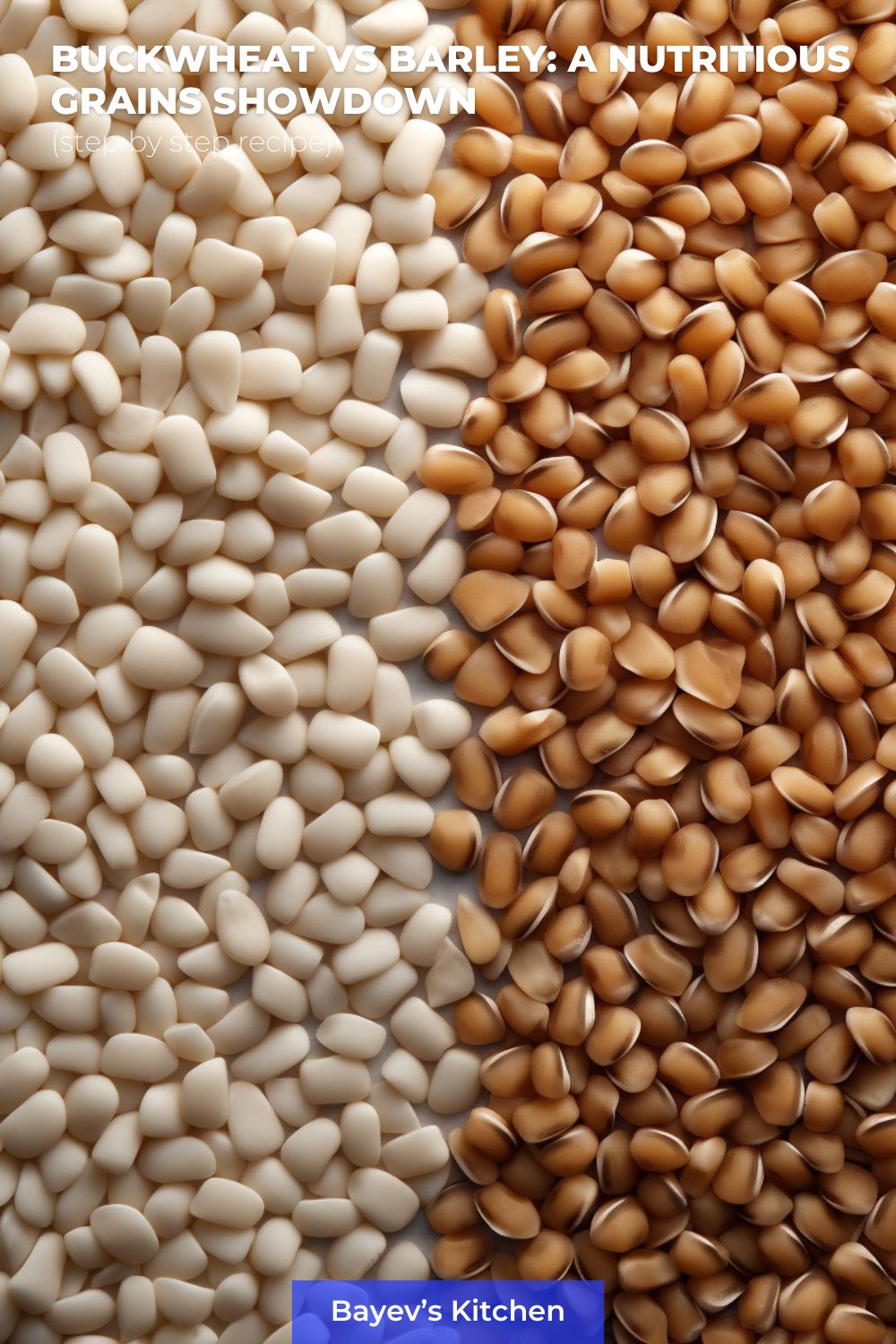Buckwheat and barley are both hearty, nutrient-packed grains that have been cultivated for centuries. Each has its own unique set of characteristics and benefits, making them both worthy contenders in your kitchen and diet. Below, we delve into 15 facts comparing these two grains, their nutritional profiles, culinary uses, and flavor profiles.
1. The Basics
Buckwheat isn’t technically a grain, but a pseudocereal, meaning it’s actually a seed. Despite its name, it’s not related to wheat and is gluten-free. Barley, on the other hand, is a true grain and contains gluten. It’s one of the oldest cultivated grains, dating back over 10,000 years.
2. Nutrient Profiles
Both buckwheat and barley are highly nutritious. Buckwheat is an excellent source of manganese, copper, and magnesium. Barley, meanwhile, provides an abundance of fiber, selenium, and vitamin B1.
3. Protein Content
Both grains pack a protein punch. However, buckwheat takes the lead with 13.3 grams of protein per 100 grams, compared to barley’s 9.9 grams.

4. Fiber Showdown
When it comes to dietary fiber, barley is the clear winner with 17.3 grams per 100 grams. Buckwheat, though still respectable, offers 10 grams of fiber.
5. Taste Test
Buckwheat has a robust, earthy flavor, while barley is slightly sweet with a nutty undertone. Both grains have a hearty, satisfying texture.
6. Versatility in Cooking
Both buckwheat and barley are versatile in the kitchen. Buckwheat is often ground into flour and used in pancakes, bread, and noodles, while barley is popular in soups, stews, and as a side dish.
7. Gluten-Free Status
If you have gluten sensitivity or celiac disease, buckwheat is your best bet. It’s naturally gluten-free, while barley contains gluten.
8. Digestive Health
The high fiber content of both grains contributes to digestive health. Barley, especially, contains soluble fiber which slows down digestion, aids in nutrient absorption, and helps lower cholesterol.
9. Cooking Times
Both grains require boiling and simmering until tender, but barley generally takes longer to cook than buckwheat.

10. Satiety
Both grains have a low glycemic index, meaning they release their sugars slowly into the bloodstream, providing longer-lasting energy and helping you feel full.
11. Cultural Significance
Buckwheat is a staple in many East Asian cuisines, while barley has been a mainstay in European and Middle Eastern diets for centuries.
12. Impact on Blood Sugar
Due to its high fiber content, barley has a lower glycemic index compared to other grains, making it a good choice for those managing diabetes. Buckwheat also has a moderate glycemic index and may help regulate blood sugar.
13. Weight Loss Friendly
Both grains are good choices for weight loss diets because of their high fiber content and ability to promote satiety.
14. Ancient Grains
Both buckwheat and barley are considered “ancient grains,” having been cultivated for thousands of years and largely unchanged by selective
15. Availability
While buckwheat and barley are not as ubiquitous as wheat or rice, they are becoming more readily available due to their health benefits and culinary versatility. They can be found in the grain aisle of most grocery stores, and buckwheat flour is often located in the gluten-free or baking section.
16. Sprouting
Both buckwheat and barley can be sprouted, providing a boost to their nutrient content. Sprouted grains are believed to be easier to digest and have a lower glycemic index. Buckwheat sprouts quicker than barley, usually within 1-2 days, while barley can take up to 4 days.
17. Environmental Impact
Buckwheat plants are valuable for soil health, preventing erosion, and their flowers are excellent for attracting beneficial insects. Barley, being a robust crop, can grow in a variety of climates and is thus widespread, making it a key contributor to food security.
18. Cereal or Pseudo-Cereal
Barley is a true cereal grain, belonging to the grass family. Conversely, buckwheat is a pseudo-cereal, related to rhubarb and sorrel. This makes buckwheat an excellent option for those looking to explore beyond traditional grains.
19. Versatility in Cooking
Both buckwheat and barley are versatile in cooking. Buckwheat is used to make everything from Japanese soba noodles to Russian blinis, while barley is popular in soups, stews, bread, and is the principal ingredient in malt and beer.
Conclusion
Both buckwheat and barley have their unique characteristics and nutritional benefits. If you’re looking for a gluten-free option, buckwheat is your go-to grain. However, if you’re searching for a fiber powerhouse, barley has the upper hand. Whichever you choose, both offer a robust flavor and satisfying texture, making them fantastic additions to your culinary repertoire.
Whether you’re exploring ancient grains for their health benefits or seeking to add variety to your dishes, buckwheat and barley are both excellent choices. Next time you’re cooking, why not substitute your usual grains with one of these nutritious alternatives? Your taste buds and your health will thank you!


Very informative